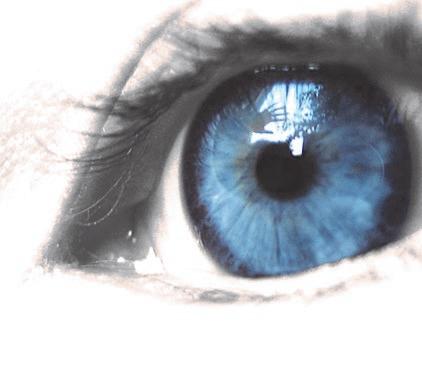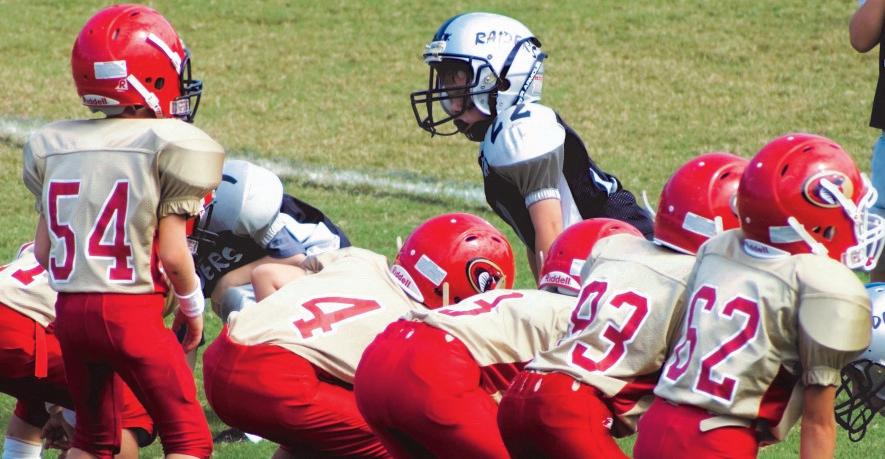






by Janet Spencer
Around the same time pyramids were being built in Egypt, early Scandinavians were strapping things to their feet and sliding across ice. Ice skating evolved over the centuries, from primitive to space-age, and is now enjoyed by millions. Come along with Tidbits as we journey through the history of skating!
• The oldest ice skates ever found were extracted from the bottom of a lake in Switzerland and carbon-dated to 3000 B.C., making them over 5,000 years old.
• However, it’s thought that a primitive form of skating first became common around Finland around 4,000 years ago.
• The first skates were made of long animal bones cut flat on the bottom and polished smooth, with holes drilled for straps to attach them to the foot. Wooden poles thrust between the legs provided propulsion.
• Skating was likely not so much for sport as it was a means of transportation, as Finland has about 187,888 lakes, and it’s easier to cross them in the winter on skates.








• The oldest known skates with metal blades, made of copper, were found in Scandinavia and date back to about 200 A.D. The next metal blades appeared on the scene in the 13th century, attached to wooden blocks strapped to the foot. (cont)





















is Published & Distributed Weekly By: CindAl Publishing Company 812 55th St. Vienna, WV 26105 e-mail: alan@tidbitsmov.com
Advertising: 304.210.3812
We reserve the absolute right to accept, reject, discontinue or refuse any advertisement personal or commercial that we deem may not be conducive for our publication or Tidbits®. The publisher does not assume any responsibility for the claims of its advertisers. Tidbits® is committed to remain a family oriented publication. www.tidbitsmov.com
• By the 1500s, blades curved upwards at the toe to prevent the tip from getting stuck in the ice.
• In 1850, Edward Bushnell was the first to craft blades out of steel, which could be clamped onto any shoe. Now skates could be mass-produced cheaply. Skating gained popularity
• Around 1865, ballet dancer Jackson Haines was the first to introduce graceful moves and athletic jumps to skating, turning it into an art form and laying the foundation of figure skating. He improved skates by screwing the blades directly to the boots and added the “toe pick,” a serrated edge that adds grip.
• The world’s first commercially successful artificially frozen ice rink was installed in London in 1876. It was designed by a meat distributor who had invented a method of freezing meat to survive long sea journeys.
• The first rink in the U.S. opened in New York City in 1879, making skating a year-round activity. As ice rinks spread, competitive sport skating flourished.
• The first organization designed to officially govern the rules of skating was the National Skating Association of Great Britain in 1879. The U.S. followed in 1886 with the National Amateur Skating Association.
• Together these groups joined with others to form the International Skating Union. The ISU remains the chief governing body for all forms of skating, including speed skating, figure skating, and ice dancing.
• The first world championships for speed and figure skating were held in 1896. Only men were allowed to compete.
• Then Madge Syers showed up at the World Championships in 1902. The judges wanted to ban her, but she challenged them to point out the place in the rulebook where women were prohibited from competing. No such rule existed. They had to let her compete. (cont)

Toby Tidbits is hiding In this issue of TidbitsMOV

When you find him, to enter the weekly contest, please send us a message including your name, POSTAL MAIL address, the issue number you are referring to and which AD is hosting Tommy for the week! Visit www.tidbitsmov.com or send the answer with the above information to alan@tidbitsmov.com OR you may send us a private message to our Facebook page - @Tidbits MOV. PLEASE do not post the answer directly to the page - that ruins the fun for everyone. All winners will be drawn randomly from correct responses and will be posted weekly. As with all our contests, though you are welcome to play every week, you are only eligible for one winner per household per month.
































• Madge Syers came in second place. The firstplace winner, Swedish skater Ulrich Salcho, offered Madge his gold medal, saying she was the best skater. She refused it.
• The ISU re-wrote the rulebook to prohibit women from competing against men, and formed the Ladies World Championship. At the 1908 London Olympics, Madge Syers won the gold. She later scandalized spectators by skating in calf-length skirts, cut appallingly short so judges could see her fancy footwork
• The term “figure skating” originated because competitions involved testing skaters to see how accurately they could carve designs on the ice, including figure 8s, roses, stars, and crosses. This exercise was boring for spectators and was eventually dropped.
• The popularity of ice skating boomed due to Sonja Henie of Norway. It’s not just that she won more medals than any other skater before or since, racking up three Olympic gold medals, ten World Champion medals, and six European Champion medals. It’s also because Henie discarded the tradition of stiff and stuffy routines while wearing long black skirts and somber black skates. Instead, Henie’s thrilling routines incorporated short skirts, gleaming white skates, athletic jumps and spins, and ballet moves performed to music
• Henie became a media darling, headlining a traveling ice show and starring in ten Hollywood movies in the 1930s and 1940s.
• The popularity of ice rinks burgeoned, yet resurfacing the ice was tedious and timeconsuming until Frank Zamboni came along. He was an innovative refrigeration genius who owned an ice plant in Paramount, California.
• In 1939, he built the Paramount Iceland skating rink next to his ice factory and subsequently invented the ice resurfacing machine, naming it after himself and patenting it in 1953. (cont)





• A Zamboni scrapes off the top layer of ice and then sprays a layer of hot water at 140 to 145°F (60 to 63°C). The hotter the water, the better the ice.
• While rehearsing for an upcoming performance of the Hollywood Ice Revue, Sonja Henie was introduced to Frank Zamboni’s resurfacing machine. She was so impressed that she bought her own, taking it everywhere on tour. This increased its popularity.
• Zamboni’s Paramount Iceland skating rink is still open for business today. An estimated 12,000 Zambonis are in use worldwide.
• The fastest recorded spin on ice skates is 342 revolutions per minute by Olivia Oliver of Canada in 2015. That’s almost 6 turns per second.
• Today, the world’s largest indoor ice rink is in the city of Nizhny Novgorod in Russia. It has a surface area of 135,625 ft² (12,600 m²), which is a little over three acres. It can accommodate 15,000 spectators.
• The world’s longest ice skating trail is 18.63 miles (29.98 km) long. It’s formed by the freezing of the Lake Windermere Whiteway in Invermere, British Columbia, Canada.
• The record for the longest distance skated in 24 hours belongs to Martinus Kuiper of the Netherlands. He skated 339.67 miles (546.65 km) at Alkmaar, Netherlands, on December 12 and 13, 1988. That’s about 14 miles (22.5 km) every hour.
• Whether you’re skating on a winter day, watching Olympic skating events from your recliner, or enjoying a hockey game, remember the long line of innovators who turned skating into not only a fun frolic on a winter’s day but also a long list of fascinating competitive sports.


Go ahead, embarrass yourself...Show our advertisers your Tidbits☻




I was in a hurry while I was recently sifting through my gadget drawer for holiday cookie cutters when my mom's classic metal nutcracker, wedged in the back corner, caught my eye. It gave me pause, as I was suddenly a kindergartner again, transported to my childhood home during the holidays in Santa Rosa, California.
The walnut trees in our backyard produced a bumper crop that year, and it was my job to crack the nuts. With all the strength I could muster, I split them in two, and Mom pried out the nutmeat with a pick. We filled brightly painted tin coffee cans and wrapped them in big sheets of red cellophane, cinched together with festive bows and gift tags that read "From Our House to Yours."
As the years pass, California walnuts continue to make an appearance during the holidays, often doctored up with sugar and spice. Here are two of our favorite family recipes for yummy candied walnuts that give the healthy nut a festive taste for snacking and for gift-giving if you have any left!
The recipes come together in minutes on your stovetop. For the best results, use an inexpensive candy thermometer. An adult should do the cooking while the kids enjoy decorating containers and gift tags.
CANDIED WALNUTS WITH YOGURT
Makes about 3 cups
1/2 cup granulated sugar







1 cup light brown sugar (packed)
1/2 cup plain yogurt
1 teaspoon vanilla
2 cups walnut halves or large pieces
Butter, or line a baking sheet with parchment paper
Combine sugars and yogurt in a medium saucepan. Cook over medium heat, stirring constantly until mixture reaches a soft ball stage (235 F on candy thermometer).
Add vanilla and cool until mixture begins to thicken.
Add nuts and stir until covered.
Spread out nuts on baking sheet to cool.
Makes about 4 cups
1 cup sugar
1/2 teaspoon salt
2 teaspoons orange zest
1 teaspoon cinnamon
5 tablespoons milk
1 tablespoon orange juice
3 cups walnut halves or large pieces
Butter, or line a baking sheet w/parchment paper
Combine sugar, salt, orange zest, cinnamon, milk and juice. Cook over medium heat, stirring constantly until mixture reaches a soft ball stage (235 F on candy thermometer).
Add nuts. Cook over low heat, stirring until most of the syrup sticks to the nuts.
Spread out nuts on baking sheet until cool.



• Smallpox was one of the worst diseases ever to affect humanity. It was outrageously contagious and killed 30% of its victims. An estimated half a billion people died from it worldwide throughout the 1900s despite a vaccine being available.
• The Aztec and the Inca societies were all but wiped out after the arrival of the Spanish conquistadors because of smallpox. Within the span of a single year, they were reduced from being the greatest civilizations on the planet to being a mere remnant.
• Cortes accidentally brought smallpox when he arrived in 1519. One of his soldiers died during battle. He had been sick with smallpox before being killed. The Aztecs looted his body, and the disease spread. The Aztec city of Texcoco, with a population of around 15,000 soldiers before the arrival of Cortes, was reduced to about 600 people, or 4% of its original population, by the year 1580. Smallpox killed about 90% of the native people throughout the Americas.
• After the Aztecs were nearly wiped out, the remaining few devised a new calendar, starting from the year of “The Great Leprosy” as the arrival of smallpox split their history into “before” and “after.”
• Though smallpox was deadly for Europeans, they had been exposed to it for centuries. Every time a new wave swept through, survivors developed immunity, which could sometimes be passed on to their children. Europeans also lived in close proximity to their livestock including cows, pigs, goats, horses, and chickens. This exposed them to many less serious illnesses, including cowpox, which rendered immunity from smallpox. Populations throughout the Americas didn’t keep livestock, and had fewer chances to develop immunity. (Continued page #7)




































DEAR PAW'S CORNER: I'm 16 and love pets I have a dog, cat and an iguana already and I want to start my own pet sitting business. What is the best way to start? How do I get customers? Do I need a license or something? Jeannie H., Pittsburgh
DEAR JEANNIE: Pet sitting can be a great business to get into. Every pet owner needs someone to watch their pet from time to time: long workdays, vacations, illness and so on. However, it's a business that carries a lot of responsibility. Being reliable is very important and is essential to building your reputation as a sitter that pet owners can trust.
I recommend a trial period first, with a couple of neighbors or your parents' friends. This will give you an idea of what the job entails, how long it takes to care for each pet, and can open your eyes to opportunities. For example, a neighbor who works from home may not need a sitter, but their dog could use an extra walk in the afternoon. At the same time, study up on the requirements for running a business. Entrepreneurship courses are often available for free through your local library or at the Small Business Association (where you can also find a business mentor).
Most states don't have a licensing requirement for pet sitters, but you can get a certification through Pet Sitters International (petsit.com), or the National Association of Professional Pet Sitters (petsitters.org). These organizations offer a wealth of information including how to find clients. Most of all, have fun! You're getting into this business because you love pets, and that will be a big factor in your success. Send your tips, comments or questions to ask@pawscorner.com. (c) 2024 King Features Synd., Inc.






• The last known case of smallpox occurred in 1978 at the University of Birmingham in England. Janet Parker was a medical photographer who worked in the labs. One floor below her, virologist Henry Bedson had been studying one of the world’s few remaining smallpox virus samples. Bedson was one of only a handful of biochemists commissioned to research the disease. He was working quickly because the stockpile was scheduled for destruction, as the WHO worked to elliminate stashes of the virus.







• Some of the virus escaped into the air ducts, and Janet Parker inhaled them as they floated into her lab. Although she had been vaccinated against smallpox 12 years earlier, it had worn off by then. She died two weeks later, becoming the last human on earth ever to die of smallpox. Appalled, Henry Bedson committed suicide. As a precautionary measure, the hospital ward where Parker had been treated was sealed for five years.
• In 1980, two years after Mrs. Parker’s death, smallpox was officially declared to have been eradicated. The disease had been defeated by medical science. It was the first infectious disease to have been fought on a global scale.
• Today there are only two known reservoirs of the smallpox virus: one is owned by the CDC in Atlanta, Georgia, and one is in a secure facility at a virology institute in Siberia.
• After the attack of September 11, 2001, the U.S. Government stockpiled enough smallpox vaccine to protect every citizen in the U.S. This vaccine takes only three days to render immunity. So if smallpox were ever used as a biological weapon, we would be prepared.
• With smallpox eradicated, the next deadliest disease that moved into the #1 position was tuberculosis, which is still widespread though vaccines prevent it and penicillin cures it.



* "I have added an additional shower curtain bar in my tub. I hang up my towels and washcloths there to air dry, and they are out of sight behind the shower curtain. It's very convenient." A reader
* "I have small candy dishes out in my home, and I like to keep them filled with goodies throughout the year, but now, when I have little children over, I put them up high and let parents know that they and the children are welcome to have as much as they like. The parents appreciate this, as the children sometimes like to overindulge." D.A. in Rhode Island

liness in your house.
* Here's another use for a bandanna: In-a-pinch earmuffs. Tie around head and position over cold ears to keep winter winds at bay.
* "When traveling, let your host/hostess know of any serious health problems or allergies you may have and what to do in case of an emergency."
M.W. in Saskatchewan Canada

* Unexpected company on the way?
Throw clutter in a laundry basket and stash. Clear the sink of dirty dishes; take out the garbage; clean the faucets, sink and mirror in the bathroom most likely to be used; and, finally, sweep or vacuum the floors. This should not take long, but these moves will maximize the feeling of clean-
* One great item to have on hand in your pantry: jarred peppers and olives. They can be used to make a quick but sophisticated appetizer, and they add a lot of flavor for their price. They are very stable on the shelf, so you can keep them around just in case.
Send your tips to Now Here's a Tip, 628 Virginia Drive, Orlando, FL 32803.
(c) 2024 King Features Synd., Inc.





